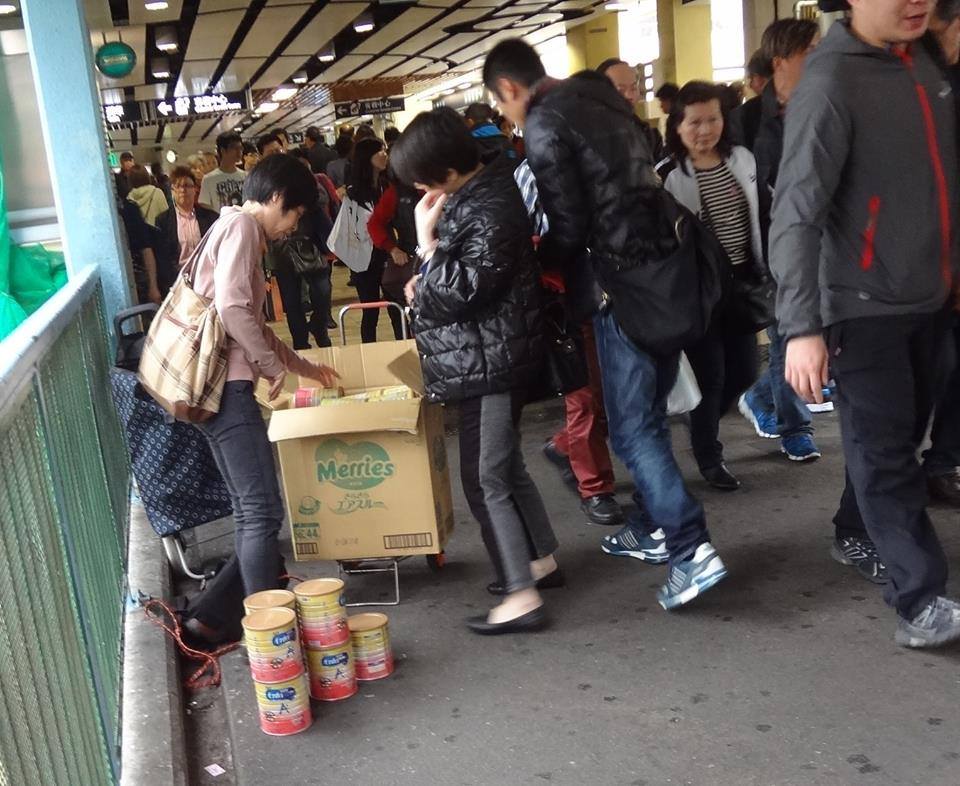Trails of litter left by parallel traders transporting frozen meat have become a common sight in Sheung Shui, a northern town in Hong Kong close to the Chinese border.
In a video uploaded by netizen LostDutch, parallel traders can be seen packing frozen beef on the streets of Sheung Shui, raising concerns over hygiene. Heaps of rubbish were also left behind on the road.

Frozen beef is proving to be a big hit among parallel traders. Previously, day-to-day items such as baby milk formula, Yakult drinks and Ferrero Rocher chocolates have been popular goods for cross-border trade.

Oriental Daily reported that parallel traders can earn up to HK$1,000 for each trip transporting frozen beef across the border. However, doctors pointed out that if the frozen beef is not kept properly at -18 degree Celsius, it could be spoiled during the journey.
Speaking to HKFP during the July 1 rally, a member from a North District concern group expressed hope that more Hong Kong people will pay attention to the problem of parallel trading activities in the area. Wong Ka-ho, member of the group “North of the Rings”, said: “The North District is the first line of defence against mainlandisation today. Since 2012, the problems we face have only worsened. We are losing our culture.”

The problem of parallel trading can be traced back to 2003 when the Individual Visit Scheme was implemented. The old policy allowed mainland Chinese from certain cities to visit Hong Kong with a simple visa registration. Many of them took the opportunity to carry back goods that were in strong demand over the border.
However, in March this year, Secretary for Security Lai Tung-kwok estimated that about half of the parallel traders were Hong Kong residents.

The problem worsened in 2009 after the Chinese government allowed Shenzhen residents to enter the city an unlimited number of times within a designated period. That scheme was shelved after heavy criticism three months ago.

The number of mainland visitors to Hong Kong has drastically increased from 8.47 million in 2003 to 47.2 million in 2014, according to the Tourism Commission. Mainland visitors accounted for 77.7 percent of all visitors in 2014.
The North District has seen an increased number of large-scale protests targeting parallel traders since 2013. In September 2012, a rally called “Liberate Sheung Shui Station” drew hundreds of demonstrators to protest against parallel trading in the area.

Protesters argue that parallel traders obstruct roads and create a shortage of goods in the North District. According to Hong Kong Economic Journal, a housewife living in the North District complained that it was difficult to buy daily necessities such as baby milk powder and shampoo.
Protesters also say that the presence of traders has led to higher rents and a proliferation of pharmacies (which sell a variety of goods including cosmetics and infant formula) displacing small businesses which catered to local needs.

Parallel traders have also been accused of causing traffic congestion in the North District. Apple Daily reported in January that parallel traders were seen occupying bus spaces to load their goods.

Traders have also been filmed using public spaces outside Sheung Shui station to pack their goods before crossing the border, prompting complaints from local residents.
In 2012, northern Hong Kong suffered frequent shortages of baby milk formula after parallel traders cleared local pharmacies and carried the goods across the border. A law limiting exports of baby milk formula was passed in 2013 after repeated complaints from local mothers.

The law stated that any person carrying more than 1.8kg of powdered formula when leaving Hong Kong may face a maximum fine of HK$500,000 and two years imprisonment.
In 2015, the protests spread to other areas of Hong Kong affected by visitors from mainland China, including Yuen Long, Sha Tin and Tuen Mun. On several occasions, clashes broke out between protesters and mainland tourists, prompting police to intervene.

In response to public criticism, the MTR introduced a luggage limit on the East Rail Line in 2012. Passengers are now forbidden from carrying more than one piece of luggage, and the luggage must be under 32kg. It also set a limit on the size of the luggage.
In April, Chinese authorities announced that they would replace the multi-entry permit with a one-visit-per-week permit for Shenzhen residents. Chief Executive Leung Chun-ying stated that the policy was directly targeted at parallel traders.

Immigration Officers have arrested more than 2,000 people since operations began in 2012. Mainland visitors suspected of engaging in parallel trading are usually charged with breaching their conditions of stay.
According to Chinese law, it is illegal to smuggle frozen beef without paying import tax. Offenders are liable to three years imprisonment.
